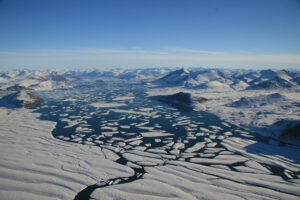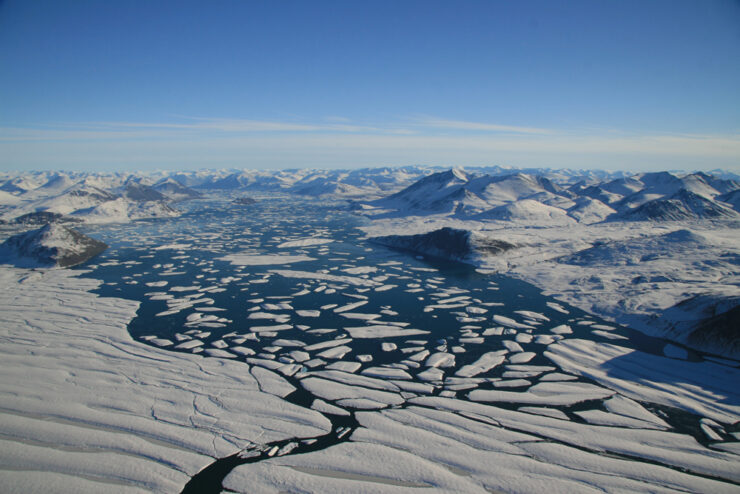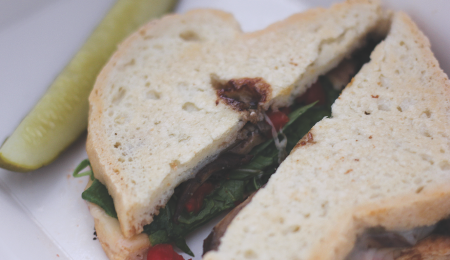
Map of Canada to be redrawn
ELLESMERE ISLAND, THE most northern point of Canada, is undergoing a big change. In the past six years, ice shelves that were a part of the island’s territory have been damaged because of climate change. Luke Copland, associate professor in the Department of Geography at the University of Ottawa, has been conducting the research on the ice shelves.
“They’re essentially floating glaciers, but they’re not on the land. They float in the ocean [and are attached to the coast],” said Copland, noting they can be between 40 and 100 metres thick.
The ice shelves take hundreds to thousands of years to form in the right environment. Ellesmere Island is the only place in Canada where they exist, but recently they’ve started disappearing.
“The Ward Hunt [ice shelf] had a crack going through it in 2002,” said Copland, explaining this was the first sign of changes in the shelves. “Since then … most summers we’ve lost more and more of the ice shelves. This pattern is not reversing, and it’s not going away.”
Today, three out of six ice shelves remain, and the rest are disappearing rapidly. According to Copland, the average annual temperature in the region is rising, which has caused the ice shelves to melt.
“There’s not much change [in temperature] in the summer, but dramatic change in the winter. The winters are getting much warmer now than they were in the past,” explained Copland, adding that the average winter temperature has risen by about 1 C per decade over the past 60 years.
“Today, it’s rare to see many days below -30 C in the winter. When you look back to temperatures in the past, we often reached temperatures below -40 C. We’re not getting nearly as much intense cold in the winter as we did in the past.”
Before the annual changes in temperature took effect, the sea ice would constantly be pushed hard against the coast. There would be little to no water between the sea ice and the ice shelves, protecting the latter from erosion. As the temperatures have become warmer, sea ice got smaller, thinner, and more scarce, no longer pushing against the ice shelves.
“What that means is that sea ice isn’t there as much in the summer to protect the ice shelves anymore,” he said. “The ice shelves aren’t protected from the effect of waves—they aren’t protected from the effect of wind anymore.”
A consequence of these changes is the map of Canada has to the altered.
“We have to redraw the maps in this area because these ice shelves are considered a part of the land—a part of the extension of Canada—and when we lose them we have to redraw the [coastline] of Canada,” said Copland.
Another issue is the disappearance of very unique microbiological life, housed by the ice shelves, which provides one of the best parallels on Earth of what might be found on other planets, such as Mars.
“You have this unique situation where you’d have fresh water, 40 metres thick, sitting directly above sea water. That allowed free [movement] of organisms between the two,“ he explained. “If you lose the ice shelves, you lose all of this unique microbiological life that lived on them, within them, and beneath them.”
Because the ice shelves are huge, the pieces of them that break off are also a threat to structures at sea. Copland said they drift with the ocean currents to the Beaufort and Chukchi seas, off the northern coast of Canada and Alaska, which are currently home to several oil production and exploration platforms.
“When you break off these ice shelves, you create very large icebergs, which we call ice islands in the Arctic, and these ice islands are the size of cities,” he said. “The ones that are breaking off are about the size of Manhattan.”
The ice islands could be monitored by either dropping tracking devices on them or using satellite imagery. With satellite imagery, it can be hard to distinguish between sea ice and icebergs during certain times of year.
“So, we can track the big pieces, but the small pieces are about a kilometre by a kilometre [big],” said Copland, explaining those islands are harder to follow. This makes smaller pieces of ice more of a risk because they can still do damage, but cannot be tracked as easily.
Copland explained there’s no way the ice shelves can be preserved with the current climate.
“It takes centuries [to] form these ice shelves, but you can get rid of them in one day. They can just crack off and float away,” said Copland. “Once they’re gone, they’re gone. You can’t stop nature.”
—Jane Lytvynenko




